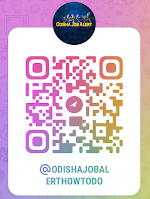In the age of social media, it's not uncommon for quirky and humorous content to capture widespread attention. Recently, a student's hilarious interpretation of the human heart's four chambers has taken the internet by storm. The diagram, featuring the names Pooja, Priya, Roopa, and Namitha, has not only entertained countless viewers but also sparked a conversation about creativity in education.
 |
| Student's Hilarious Diagram of Heart's Four Chambers Goes Viral: Meet Pooja, Priya, Roopa, and Namitha |
The Viral Diagram
The now-viral diagram showcases a student's unique way of labeling the four chambers of the human heart. Instead of the usual anatomical terms—left atrium, left ventricle, right atrium, and right ventricle—the student whimsically named the chambers after four girls: Pooja, Priya, Roopa, and Namitha. This creative twist has resonated with many, highlighting the lighter side of learning and the inventive ways students can make complex subjects more relatable.
Reactions from the Internet
Social media platforms have been buzzing with reactions to this unconventional diagram. Here are some highlights:
Humor and Creativity: Many users have praised the student for their humor and creativity. The diagram has been seen as a refreshing break from traditional educational methods, reminding everyone that learning can be fun and engaging.
Relatability: Some commenters have pointed out that such inventive methods can make it easier for students to remember complex information. By associating the heart's chambers with familiar names, the student might find it easier to recall the anatomical details during exams.
Educators' Perspectives: While most reactions have been positive, a few educators have expressed concern about the accuracy of such creative representations. They emphasize the importance of understanding the correct terminology, but many also acknowledge that engaging students in any form of learning is a step in the right direction.
The Importance of Creativity in Education
This viral incident brings to light a broader discussion about the role of creativity in education. Traditional teaching methods often focus on rote memorization and standardized testing, which can sometimes stifle students' natural creativity. Incorporating humor and personal connections, as demonstrated by this student's diagram, can make learning more enjoyable and effective.
Engagement: Creative approaches can increase student engagement, making them more interested in the subject matter. This can lead to a deeper understanding and retention of information.
Critical Thinking: Encouraging students to think outside the box helps develop critical thinking skills. They learn to approach problems from different angles and come up with innovative solutions.
Stress Reduction: Humor and creativity can also reduce stress and anxiety associated with learning. When students are having fun, they are more likely to participate actively and less likely to feel overwhelmed.
Conclusion
The student's humorous diagram of the heart's four chambers—featuring Pooja, Priya, Roopa, and Namitha—serves as a delightful reminder of the power of creativity in education. While it's essential to maintain accuracy in learning, finding ways to make education more engaging and enjoyable is equally important. As this viral sensation continues to spread joy online, it also inspires educators and students alike to embrace creativity and humor in their educational journeys.
This blog post captures the essence of the viral diagram incident, discussing the reactions and broader implications for creativity in education. It balances humor with insightful commentary on the importance of engaging learning methods.












